Audio Spectrum
The audio spectrum is the audible frequency range at which humans can hear and spans from 20 Hz to 20,000 Hz.
The audio spectrum range spans from 20 Hz to 20,000 Hz and can be effectively broken down into seven different frequency bands, with each band having a different impact on the total sound.
The seven frequency bands are:
Sub Bass: 20 to 60 Hz
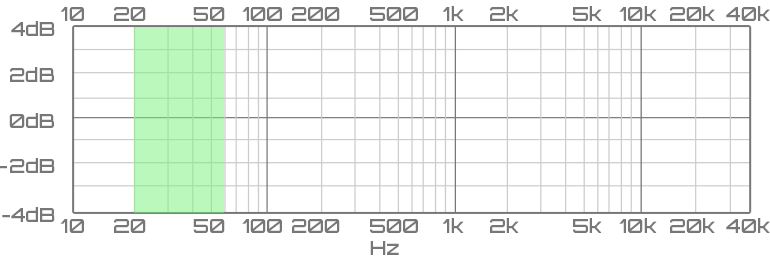
The sub-bass provides the first usable low frequencies on most recordings.
The deep bass produced in this range is usually felt more than it is heard, providing a sense of power.
Many instruments struggle to enter this frequency range, with the exception of a few bass-heavy instruments, such as the bass guitar which has the lowest achievable pitch of 41 Hz. It is difficult to hear the sub-bass range at low volumes due to the Fletcher Munson curves.
It is recommended that no or very little equalization boost is applied to this region without the use of very high-quality monitor speakers.
Too much boost in the sub-bass range can make the sound overly powerful, whereas too much cut will weaken and thin out the sound.
Sine wave example at 50 Hz
Bass: 60 to 250 Hz
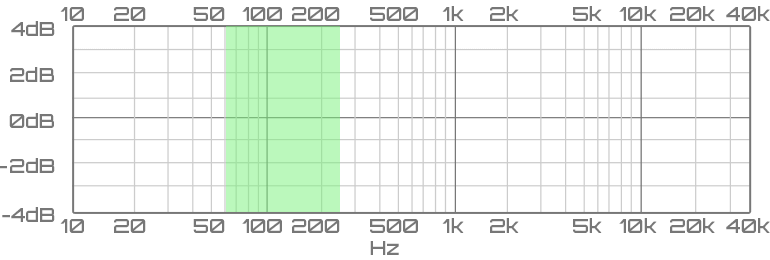
The bass range determines how fat or thin the sound is. The fundamental notes of rhythm are centered on this area. Most bass signals in modern music tracks lie around the 90-200 Hz area. The frequencies around 250 Hz can add a feeling of warmth to the bass without loss of definition.
Too much boost in the bass region tends to make the music sound boomy.
Sine wave example at 100 Hz
Low Midrange: 250 to 500 Hz
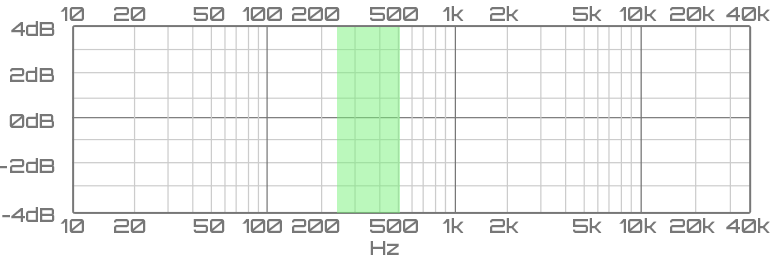
The low midrange contains the low order harmonics of most instruments and is generally viewed as the bass presence range.
Boosting a signal around 300 Hz adds clarity to the bass and lower-stringed instruments. Too much boost around 500 Hz can make higher-frequency instruments sound muffled.
Beware that many songs can sound muddy due to excess energy in this region.
Sine wave example at 300 Hz
Midrange: 500 Hz to 2 kHz
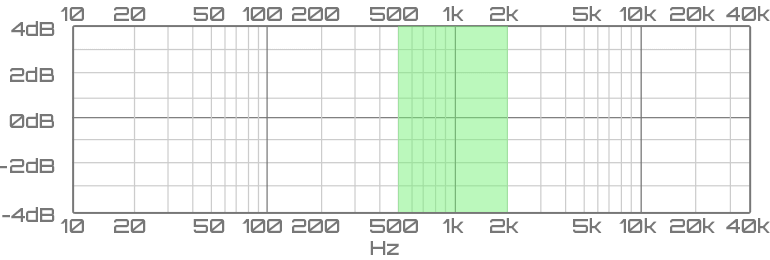
The midrange determines how prominent an instrument is in the mix. Boosting around 1000 Hz can give instruments a horn-like quality. Excess output at this range can sound tinny and may cause ear fatigue. If boosting in this area, be very cautious, especially on vocals. The ear is particularly sensitive to how the human voice sounds and its frequency coverage.
Sine wave example at 1000 Hz
Upper Midrange: 2 to 4 kHz
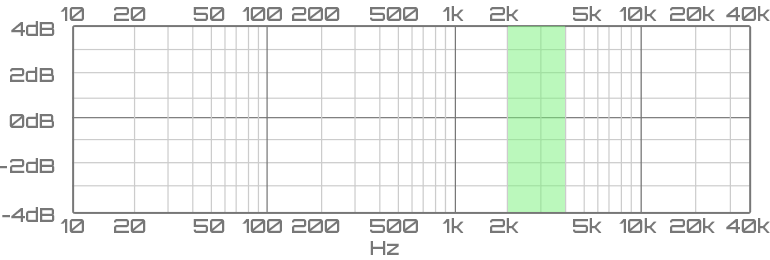
Human hearing is extremely sensitive at the high midrange frequencies, with the slightest boost around here resulting in a huge change in the sound timbre.
The high midrange is responsible for the attack on percussive and rhythm instruments. If boosted, this range can add presence. However, too much boost around the 3 kHz range can cause listening fatigue.
Vocals are most prominent at this range so as with the midrange, be cautious when boosting.
Sine wave example at 3000 Hz
Presence: 4 kHz to 6 kHz
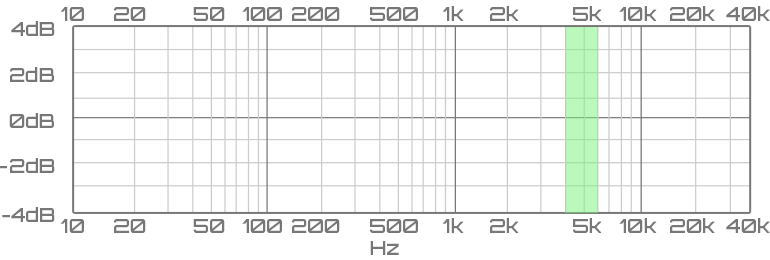
The presence range is responsible for the clarity and definition of a sound. It is the range at which most home stereos center their treble control.
Over-boosting can cause an irritating, harsh sound. Cutting in this range makes the sound more distant and transparent.
Sine wave example at 5000 Hz
Brilliance: 6 kHz to 20 kHz
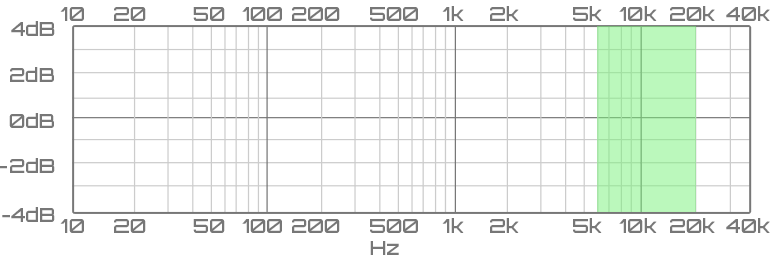
The brilliance range is composed entirely of harmonics and is responsible for sparkle and air of a sound. Boost around 12 kHz makes a recording sound more Hi-Fi.
Be cautious over boosting in this region as it can accentuate hiss and cause ear fatigue.
Sine wave example at 10,000 Hz
Summary Table
| Frequency Range | Frequency Values |
|---|---|
| Sub-bass | 20 to 60 Hz |
| Bass | 60 to 250 Hz |
| Low midrange | 250 to 500 Hz |
| Midrange | 500 Hz to 2 kHz |
| Upper midrange | 2 to 4 kHz |
| Presence | 4 to 6 kHz |
| Brilliance | 6 to 20 kHz |
 Teach Me Audio
Teach Me Audio